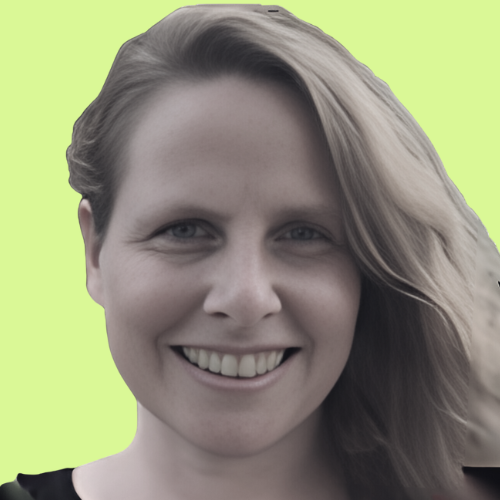In today's competitive business landscape, it's more important than ever for workplaces to provide value to employees, customers, and investors. Attracting top talent, boosting productivity, enabling innovation, and improving employee experience are all key goals to achieving higher value.
Many progressive companies are accomplishing these goals by tracking facility analytics — including attendance tracking and workplace tracking — to make facility improvements.
That’s right. Companies use facility analytics to improve their environments and retain top talent and you should too.
What is Facility Analytics
Facility analytics is the process of collecting data about how a workplace is being used daily. Space utilization data is one type of data that can be collected (through sensors, badge swipe, surveys, or observation studies) and integrated into your overall people analytics data lake.
With this workplace analytics data, managers can use it to transition to make proactive, positive changes in the company’s culture and work environment. This can even include transitioning away from assigned workspaces to flexible shared spaces and remote work. Since the pandemic, many companies have made changes, like these, and were able to reduce property costs and optimize public use spaces. After analyzing which departments are using which spaces, changes can even be made to bring teams closer together to improve mobility, increase employee connections and boost productivity.
Why Use Facility Analytics and Workspace-Related Data?
There may be some that are afraid facility analytics may be too intrusive but, done correctly, it could actually be a critical tool in improving the overall workplace experience. A few examples of what time and attendance people analytics can help track include:
- The best days for employee gatherings (monitor the days where most employees are in the office).
- Collaboration among employees by using survey data to track communication and teamwork trends.
- Employee burnout and workload to determine what generative attributes are leading to turnover.
- Office movement to know where employees’ desks are versus where they actually worked.
- Hoteling policy and proximity analysis so managers can see who is using the hotel desks and if additional desks are needed.
- Energy-saving initiatives, such as changing the temperature or adding motion-sensor lights in unused workspaces.
- Office activity and meal planning.
- Contagious illnesses tracking (e.g., COVID-19) to identify and mitigate risks in the organization by knowing who is in the office on any given day.
Facility data in people analytics can also be used to track employee productivity. If you find that teams are travelling long distances to meetings, you can move teams and/or encourage online meetings to reduce travel time and increase work availability. In addition, if you see that some people are consistently at the office for long periods of time, you may be able to intervene to prevent burnout.
How to Use Attendance Tracking to Future-Proof Your Facility
Offices provide social interaction, creativity options, and collaboration. Your goal should be to design a work environment that meets those needs and more.
COVID-19 has changed the workplace as we know it. The pandemic gave many people a taste of remote work they never had. With so many employees working remotely, companies are starting to realize that the traditional 9-5 in an office setting may not be necessary. In fact, Forrester Research found that 60% of companies are now utilizing hybrid schedules where employees can work from home and in the office.
This "next normal" workplace will require a new way of thinking when it comes to managing employees and facilities. Luckily, when you merge survey data, facility data, and your HRIS, you can start to understand how best to meet business objectives and employee needs by team, cohort, or distance from the office.
Ways to Capture Workplace Analytics
Wi-Fi Sensors
Common Workplace Analytics can be tied to People Analytics and provide a more in-depth understanding of your people. Wi-Fi sensors can be used to track employee movement and usage of common areas. This data can then be used to make adjustments to the layout of the office, as well as cleaning and sanitizing schedules. Additionally, Wi-Fi sensors can be used to send alerts to employees when they enter an area that has been recently cleaned or sanitized.
Mobile Apps
Mobile apps can be used for a variety of purposes, such as monitoring attendance analytics, sending notifications and alerts, and providing access control to certain areas of the office.
Reservation Systems
Reservation systems allow employees to book workspace in advance. Additionally, they can be used for location analysis and people analytics (e.g., tracking employee usage of common areas).
Badging Data
Badging data refers to the workspace-related data collected by security badges that employees wear. This data can be used for a variety of purposes, such as tracking employee movement, identifying trends, attendance tracking, and improving security protocols.
Get Maximum Value From Analytics Workspace With One Model
Unlock your valuable facility analytics and attendance tracking data with One Model and specialized data modeling that enables you to extract, aggregate, and analyze your data like never before.
See for Yourself. Connect with Us Today.
Facility analytics is a powerful tool that today's workplaces can use to improve employee experience and boost productivity. One Model seamlessly connects your facility tracking data with other third-party resources — such as a Human Resources Information System (HRIS), Integrated Workforce Management System (IWMS), and surveys about the workspace — to help you improve the workplace and stay ahead of the competition.
